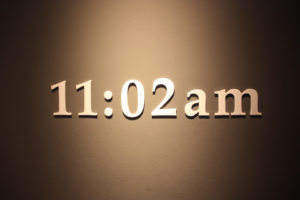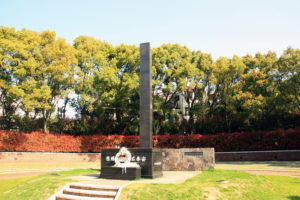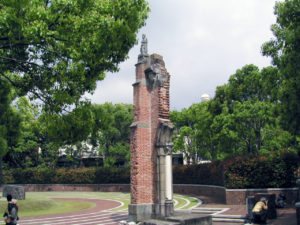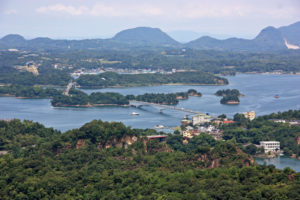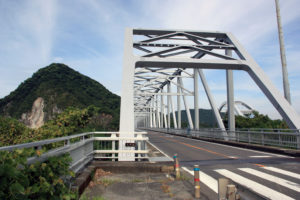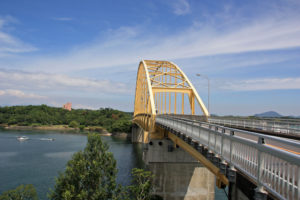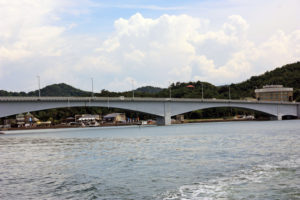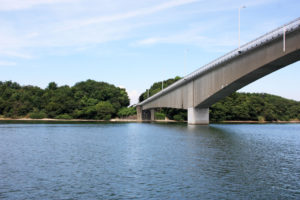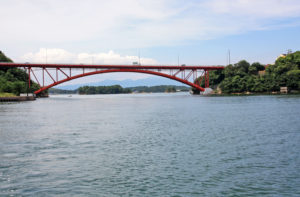Karato Fish Market established in 1933
Karato Fish Market, is a fish market in Shimonoseki establish in 1933, and the blowfish
trading volume is Japan’s highest. This market is not only the wholesale market of fresh
fishes taken in the sea around Shimonoseki but also the retail market for general consumers
of fishes, marine products and sushi.
Plenty of tourists including oversea people visit and enjoy shopping.
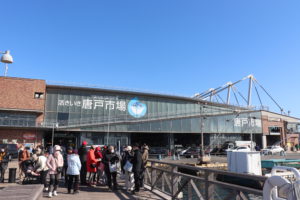 |
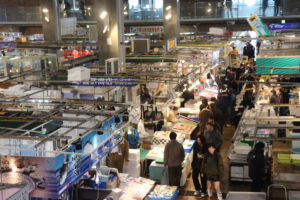 |
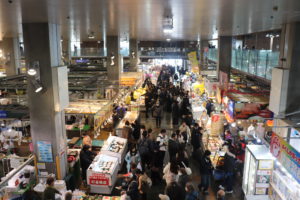 |
The Special event is “Iki iki Bakngai” which is the food stall event held every weekend
Friday to Sunday and on public holidays.
There are so many kinds of seafood stalls that you’ll be spoiled for choice with Sushi, hearty
seafood bowls and seafood soup.
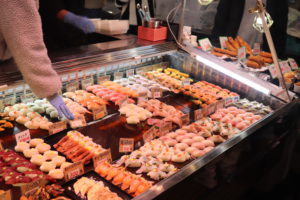 |
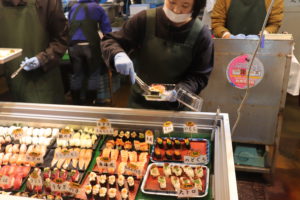 |
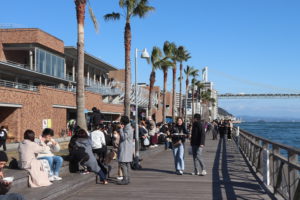 |
We recommend having lunch of purchased sushi overlooking the Kanmon Straits
in front of you.
Atomic bomb in Nagasaki in 1945
Disastrous War must not be repeated.
The plutonium atomic bomb exploded about 500m over the central monument
at 11:02 a.m. on August 9, 1945.
The most part of Nagasaki was destroyed, and a tremendous number of lives were lost.
And about 70,000 of Nagasaki’s 240,000 residents died instantly, and up to 60,000 were injured.
The radius of total destruction was about 1.6km, followed by fires across the northern portion of the
city to 3.2km south of the bomb.
The total number of residents died may have been as many as 80,000, including those who died
from radiation poisoning in the following months. Even now, many atomic bomb survivors are
suffering. The list of names of the atomic bomb victim who died up to now is stored in the monument.
Wakato bridge in Kitakyushu-city, constructed in 1962
Wakato bridge is Japan’s first suspension bridge over the Dokai Bay, connecting Wakamatsu
and Tobata, and was completed in 1962.
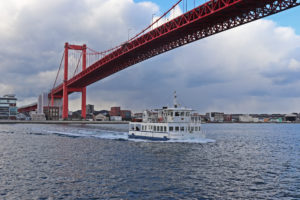 |
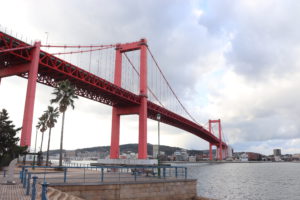 |
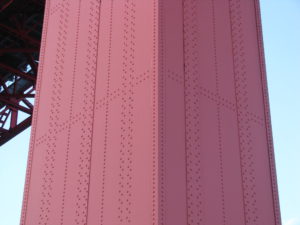 |
At the time of its completion, it was the largest suspension bridge in the East, and
due to problems with welding reliability, it was constructed using riveted joints.
24,000 tons of steel used manufactured at Yawata Steel Works.
Amakusa Gokyo, built in 1966
Amakusa Gokyo or Amakusa five bridges, is a general term for five bridges which connects
from Misumi at the Udo peninsula to the Oyano island, the Nagaura island, Ikejima, Maejima,
and Amakusa Kamishima, was built in 1966. The area on the National road route 266 called as
the Pearl Line.
|
Panoramic View |
First Bridge |
Second Bridge |
|
Third Bridge |
Fourth Bridge |
Fifth Bridge |
Kanmonkyo bridge built in 1973
Kanmonkyo bridge is the suspended bridge crossing the Kanmon Straits, a stretch of water
separating two of Japan’s four main islands. On the Honshu side of the bridge is Shimonoseki
and on the Kyushu side is Kitakyushu-city. The Kanmonkyo bridge was opened to vehicles
in 1973 and connected the Kyushu Expressway in 1984. It is the 34th largest suspension bridge
in the world with a central span of 712 meters.
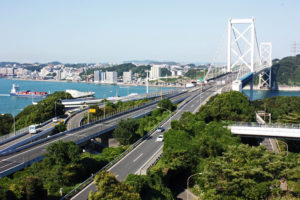 |
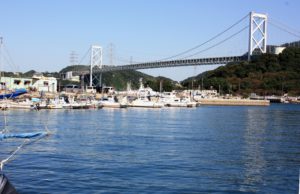 |
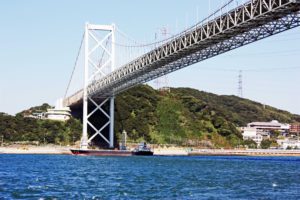 |
The Kanmonkyo bridge was opened to vehicles in 1973 and connected the Kyushu Expressway in
1984. It is the 34th largest suspension bridge in the world with a central span of 712 meters.
Japan’s Meiji Industrial Revolution registered on World Heritage in 2015
Japan’s Meiji Industrial Revolution sites registered on UNESCO World Heritafe in 2015
Iron and Steel, Shipbuilding and Coal Mining are a group of historic sites that played
an important part in the industrialization of Japan in the Bakumatsu during National
isolation period and Meiji periods, and are part of the industrial heritage of Japan.
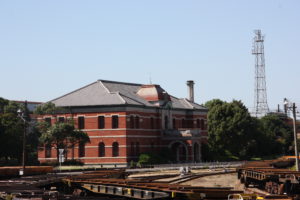 |
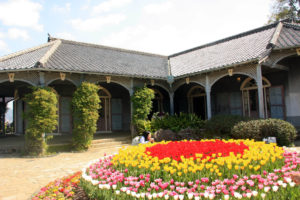 |
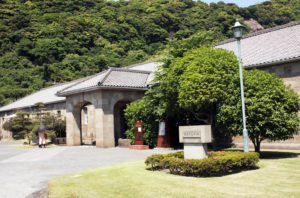 |
The UNESCO World Heritages consist of eight areas with thirty component sites located
throughout Japan from Northern part Tohoku to Kyushu.
Kyushu has 5 areas with 16 sites as follows;
・Kitakyushu : 4 sites for Iron and Steel
・Miike (Omuta, Arao and Misumi) : 3 sites for Coal Mining
・Saga : 1 site for Shipbuilding
・Nagasaki : 5 sites for Shipbuilding and Coal Mining
・Kagoshima : 3 sites for Iron and Steel
Okinoshiam and Associated site in Munakata registered on World Hetitage in 2017
The island of Okinoshima is located in the Genkai sea between Japan and Korea, As even
landing on the island has been prohibited, the strict taboos have preserved archaeological ritual
sites on the island almost intact over a millennium.In three shrines of Munakata Taisha, located
in the islands of Okinshima, Oshima and Kyushu.
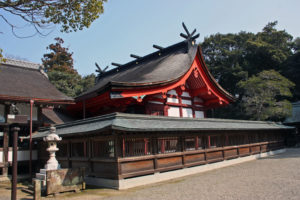 |
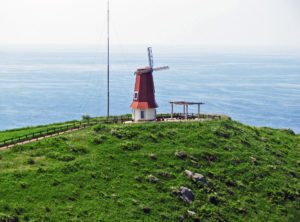 |
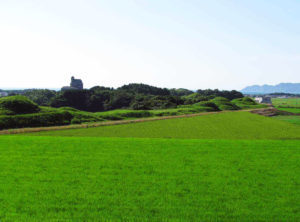 |
From Okitsu-miya Yohaisho on Oshima, we can worship Okinoshima from afar. And Shimbaru-Nuyama
Mounded Tomb Group is the evidence of people who nurtured the tradition of worshipping the sacred
island. Location of the sites are Munakata, Fukutsu, and Oshima.
Hidden Christian sites registered on World Heritage in 2018
Hidden Christian sites in Nagasaki regions is registered on UNESCO’s World Heritage in 2018.
Japanese Christianity has a long history of continuing faith while coexisting with Japanese
traditional religion Shinto and General society.
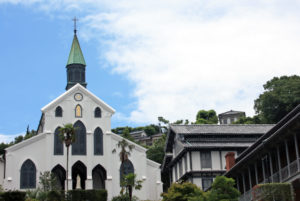 |
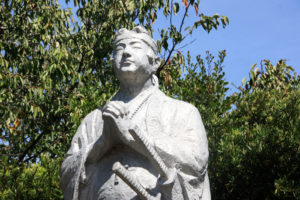 |
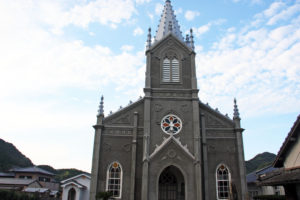 |
Japan’s unique practice of the Christian faith continued even during the ban on Christianity.
Hidden Christian Site in Nagasaki, Shimabara , Hirado and Amakusa Regions bear unique
testimony to the tradition of people and their communities who secretly transmitted
their faith in Christianity while surviving in the midst of the conventional society and its religions
during the time of prohibition.

